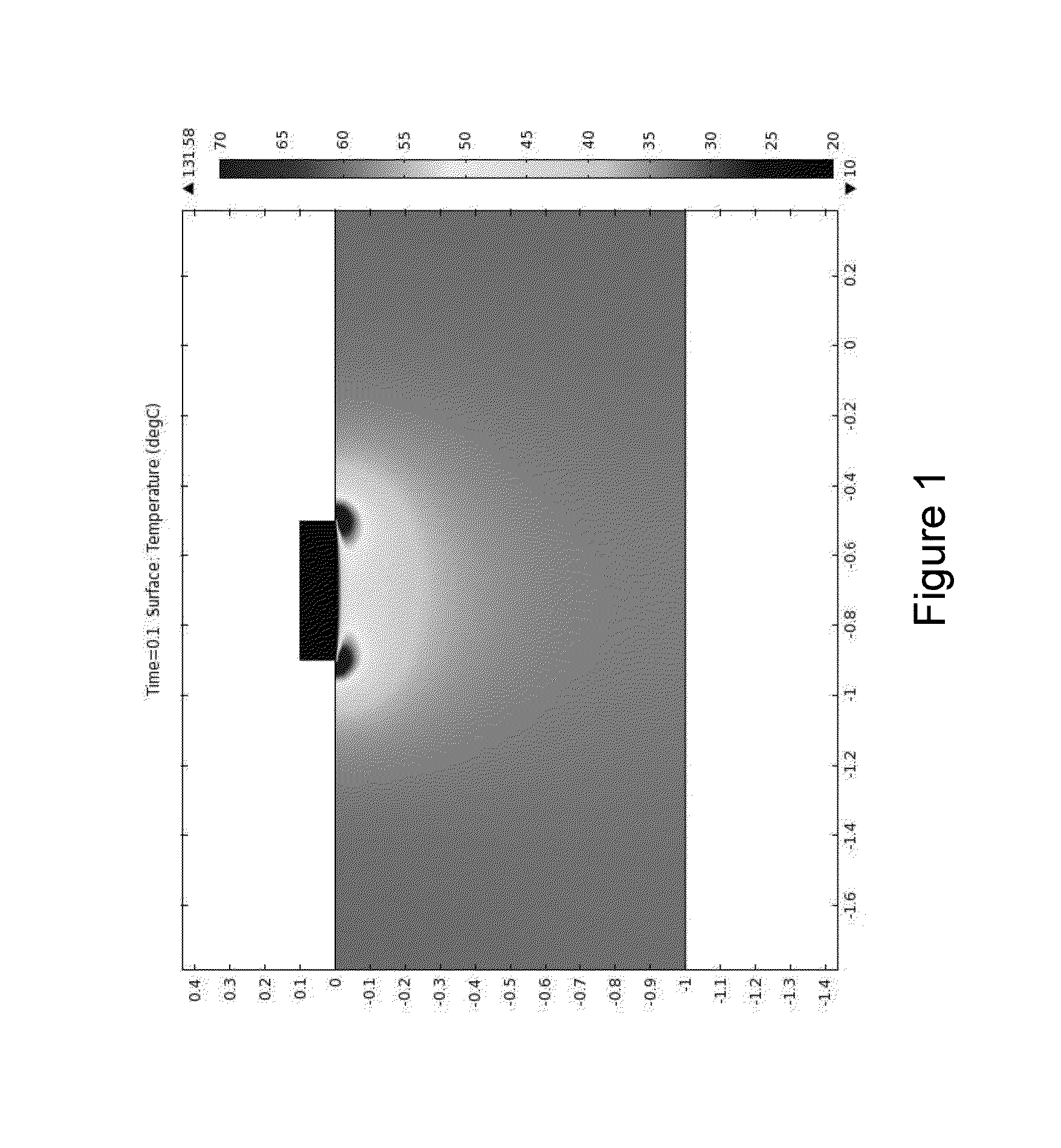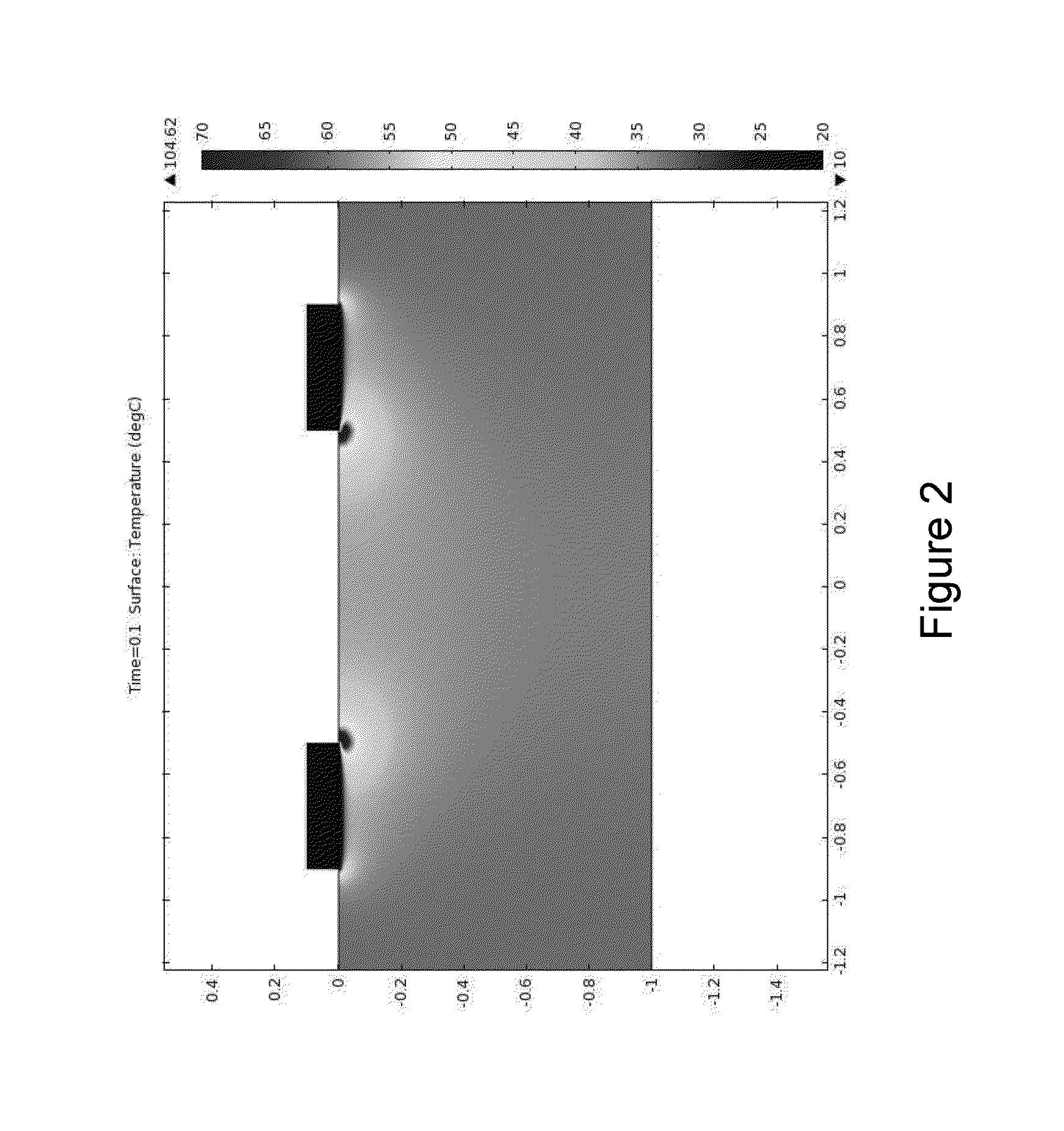Reduction of RF Electrode Edge Effect
a radiation therapy device and electrode edge technology, applied in radiation therapy, medical science, radiation therapy, etc., can solve the problems of limiting the amount of energy that can be delivered to tissue, non-uniform thermal, etc., to improve the spatial uniformity of energy delivered, improve the effect of electrical energy delivered to tissue, and high thermal conductivity
- Summary
- Abstract
- Description
- Claims
- Application Information
AI Technical Summary
Benefits of technology
Problems solved by technology
Method used
Image
Examples
Embodiment Construction
[0027]FIG. 1 shows a cross-section of a temperature profile in skin for a monopolar copper electrode applied to a skin surface without a semiconductive cap. FIG. 2 shows a cross-section of a temperature profile in skin for bipolar copper electrodes applied to a skin surface without semiconductive caps. Uneven heat distribution is seen at the edges of the monopolar electrode and is symmetric (equal at both edges). For the bipolar electrodes, the uneven heat distribution is seen at the edges, but is asymmetric. The current density is greater along the inner electrode edges because the pathlength is shorter and hence impedance is lower. More current will travel this path. In both examples, 20 joules of RF energy is delivered to tissue. In general, temperatures greater than 70° C. lead to adverse skin effects such as blisters.
[0028]FIG. 3 shows a cross-section of a temperature profile in skin when using semiconductive caps (e.g., formed from a ceramic material) on the electrodes. In the...
PUM
 Login to View More
Login to View More Abstract
Description
Claims
Application Information
 Login to View More
Login to View More - R&D
- Intellectual Property
- Life Sciences
- Materials
- Tech Scout
- Unparalleled Data Quality
- Higher Quality Content
- 60% Fewer Hallucinations
Browse by: Latest US Patents, China's latest patents, Technical Efficacy Thesaurus, Application Domain, Technology Topic, Popular Technical Reports.
© 2025 PatSnap. All rights reserved.Legal|Privacy policy|Modern Slavery Act Transparency Statement|Sitemap|About US| Contact US: help@patsnap.com



